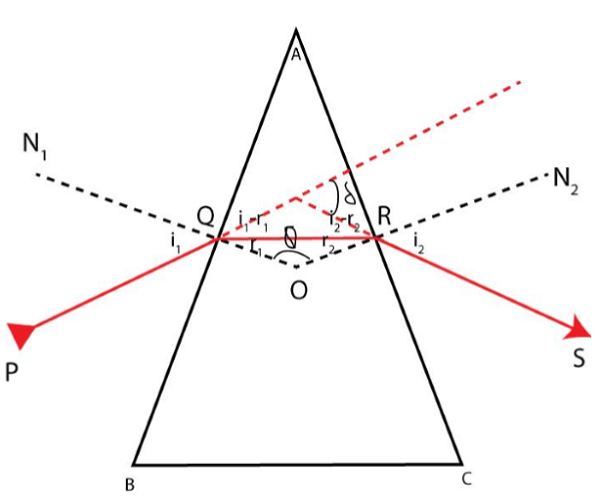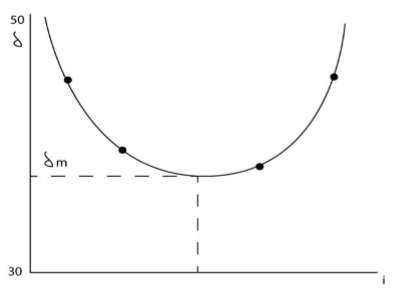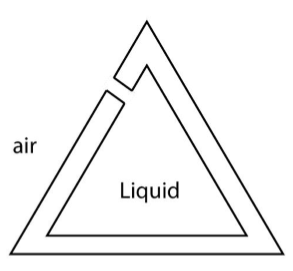Refraction Through Prism
Description:
Prism is a wedge shaped triangular transparent block with three rectangular planes and two triangular planes.
Two inclined plain surfaces of a transparent medium makes a prism and these surfaces are known as refracting surfaces.
Terminologies used with prism
Incident ray
The light ray which travels through the rarer medium and strikes the refracting surface of the prism is known as incident ray.
Refracted ray
When the incident ray strikes the prism it is refracted and it known as refracted ray. Refracted ray lies within the prism.
Emergent ray
When the refracted ray strikes the other surface of the prism it is again refracted and moves out of the prism and is known as emergent ray.
Angle of deviation
Angle between the incident ray and emergent ray is known as angle of deviation.
Angle of prism
The angle between the two inclined refracting surfaces is known as angle of prism.
In prism the light bends towards the base of prism.
Let us consider a section of prism ABC with PQ as the incident ray QR as the refracted ray and RS as the emergent ray as shown in figure −

From figure we can observe that −
∠A + ∠Q = 180o
And
r1 + r2 + ∠Q = 180o
Hence, Angle of prism is given by −
A = r1 + r2
From figure we can observe that −
δ = (i1 - r1) + (i2 - r2)
∴ δ = (i1 + i2) - (r1 + r2)
δ = i1 + i2 - A
Refractive index of material of prism is given by −
For small angle sin i ≈ i
∴ i = μr
Hence, Angle of deviation is given by −
δ = μr1 + μr2 - A
∴ δ = μ(r1 + r2) - A
∴ δ = μA - A
∴ δ = A(μ - 1)
Minimum angle of deviation
| Angle of Incidence | Angle of deviation |
|---|---|
| 25 | 50 |
| 28 | 48 |
| 31 | 45 |
| 34 | 36 |
| 37 | 35 |
| 40 | 38 |
| 43 | 40 |
| 46 | 46 |
By observing the above table we draw a graph and conclude that −

In a prism when angle of incidence is increased gradually, the angle of deviation first decreases then increases. In this process the minimum value of deviation achieved is minimum deviation.
When a prism is in the condition of minimum deviation, the angle of incidence i1 is equal to the angle of emergence i2
Similarly, angle r1 = r2
Then,
A = 2r or r = A/2
δm = 2i - A or i = δm+A/2
Hollow prism
A prism which is made-up of thin glass slab and which is hollow inside is known as hollow prism. Hallow prism can be used to find refractive index of any liquid.

Any liquid can be filled inside the hollow prism and with the help of prism angle and angle of deviation refractive index of that liquid can be calculated.

